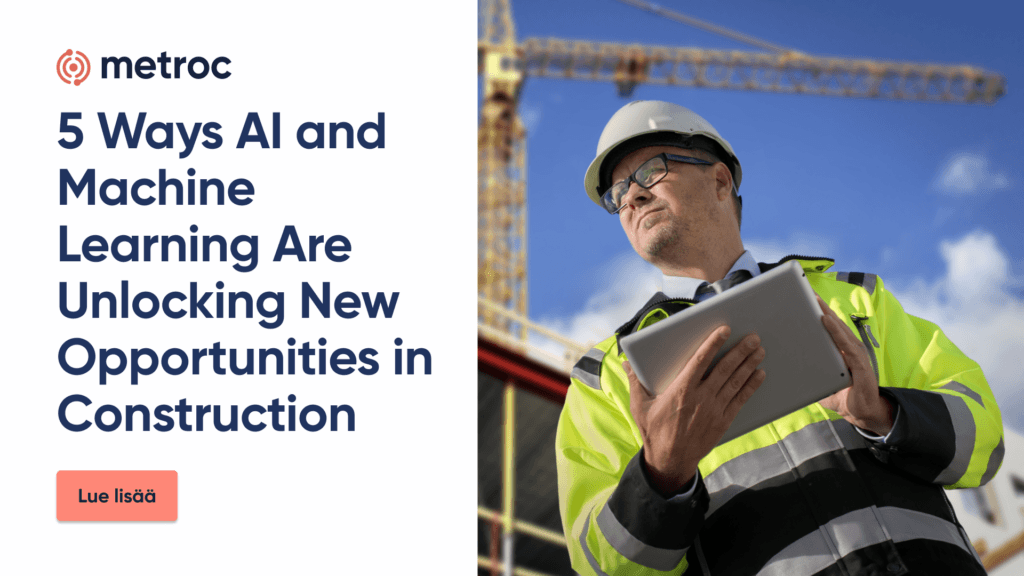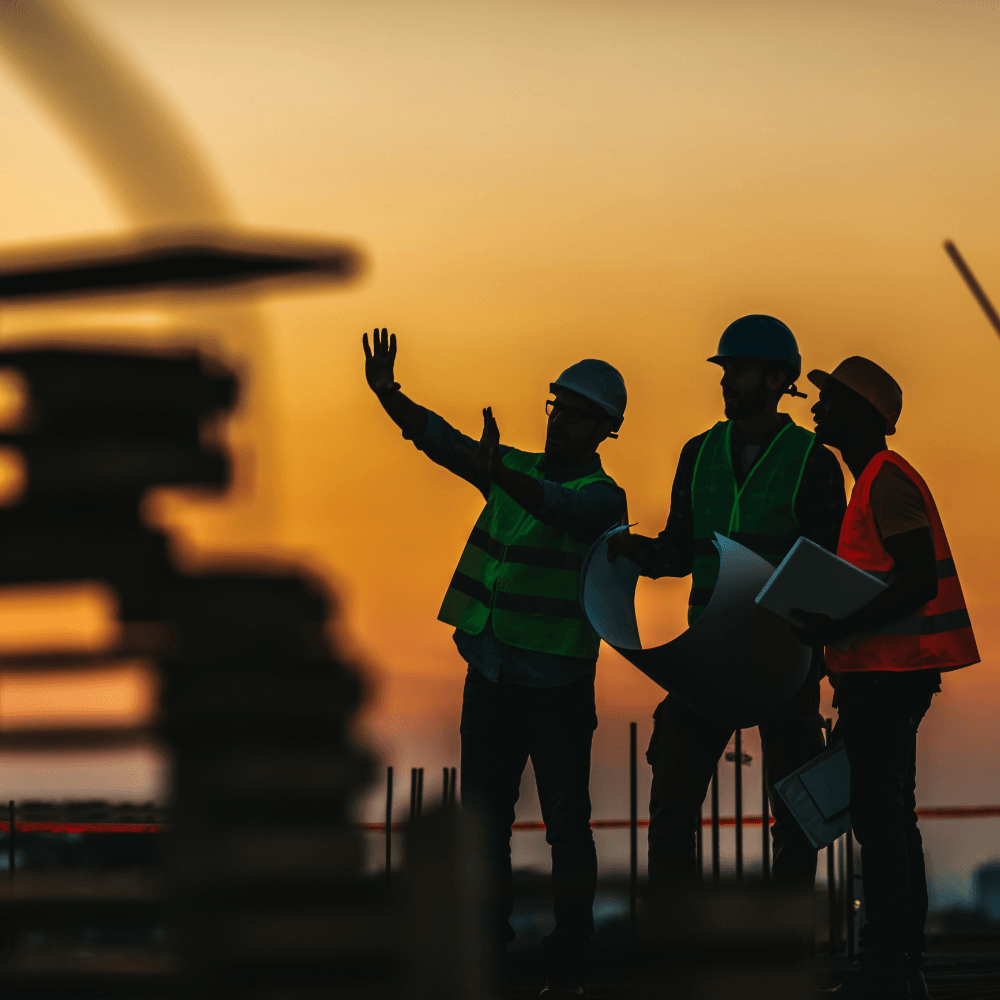5 Ways AI and Machine Learning Are Unlocking New Opportunities in Construction

Imagine reducing project planning times by up to 30% with just a few clicks. In today’s construction industry, where efficiency and speed are paramount, artificial intelligence (AI) and machine learning are not just futuristic concepts—they are essential tools that are reshaping project discovery, planning, and management. From automating mundane tasks to analyzing complex data for strategic decision-making, AI is revolutionizing how construction professionals tackle daily challenges. In this blog post, we’ll explore how AI and machine learning are unlocking new opportunities in the construction industry, transforming traditional practices into cutting-edge solutions.
This article explores how AI and machine learning are transforming construction and opening new opportunities for growth, from project discovery to overcoming regional challenges.
Redefining efficiency with AI and machine learning
1. Streamlined Project Discovery
AI and machine learning are revolutionizing how construction professionals identify new projects, making the process faster and more accurate. Traditionally, discovering potential projects required manually reviewing permits, listings, and databases—a time-consuming and error-prone process. Today, AI tools like Metroc process vast datasets in minutes, pinpointing opportunities that might otherwise be overlooked. For instance, AI systems scan building permits, zoning applications, and local government announcements to highlight upcoming projects.
Machine learning algorithms go further by analyzing historical and current market data to forecast demand trends. These insights enable companies to target areas of growth effectively and adapt their strategies to stay ahead of the competition.
AI-powered lead generation platforms, such as Metroc, simplify connecting contractors with relevant projects by matching specific capabilities to opportunities. Bidding platforms also leverage AI to streamline tendering, analyzing project requirements to help submit competitive bids. With these tools, businesses can maximize their outreach and efficiently prioritize high-value opportunities.
AI turns fragmented construction data into actionable opportunities, saving time, improving precision, and enabling smarter strategies for project acquisition.

2. Project Management Optimization
AI and machine learning improve project management by optimizing workflows, resource use, and risk identification. Integrating AI tools into project management processes enables greater efficiency and predictability throughout the project lifecycle, ensuring that resources are utilized effectively.
Scheduling and Task Management
AI automates workflow prioritization by analyzing dependencies, deadlines, and resources. This ensures timelines remain on track and minimizes bottlenecks. Some construction firms have implemented AI-powered scheduling tools to dynamically adjust timelines based on resource availability and unforeseen delays, such as adverse weather conditions.
Resource Allocation
Machine learning excels in optimizing resource allocation by analyzing historical and real-time data, ensuring efficient use of materials, equipment, and personnel. This approach reduces waste and minimizes downtime, even in the face of supply chain disruptions or labor shortages.
Risk Management
AI tools enhance progress tracking and risk management by monitoring metrics like task completion rates, supply chain delays, or weather forecasts. Some companies leverage AI systems to predict supply chain risks, suggest alternative suppliers, and adjust schedules proactively. For example, if material delivery delays are detected, AI tools recommend timely adjustments to maintain momentum. This forward-thinking approach safeguards projects from unexpected setbacks.
AI optimizes construction workflows by combining predictive analysis with real-time adaptability, ensuring smoother operations and better project outcomes.
3. Data-Driven Decision-Making
AI and machine learning are transforming decision-making in construction by enabling data analysis at an unprecedented scale and depth. With vast amounts of data generated during projects, these technologies extract insights that improve accuracy and efficiency.
Performance Analysis
AI systems analyze project data—timelines, budgets, and resource usage—to identify patterns and inefficiencies. Some construction firms use AI tools to suggest workflow adjustments, reducing delays and avoiding budget overruns. These insights empower managers to refine their strategies and improve overall project performance.
Predictive Maintenance
AI-driven forecasting tools analyze equipment performance data to predict maintenance needs before breakdowns occur. This reduces unexpected downtime, lowers repair costs, and ensures smooth project execution. By implementing predictive maintenance, companies can avoid costly disruptions and enhance equipment reliability.
Cost Estimation and Quality Control
AI improves cost estimation by analyzing past project data and market trends for accurate predictions. Quality control benefits from AI systems that analyze site images or sensor data to detect defects early, preventing costly rework and ensuring standards are met. This not only enhances project quality but also reinforces customer satisfaction.
AI turns raw construction data into actionable insights, driving smarter decisions at every stage of a project and fostering continuous improvement.

4. Stronger Client Relationships and Market Expansion
AI and machine learning are redefining client relationships and market growth in construction by enhancing communication and providing actionable insights. These technologies bring efficiency and precision to client engagement and strategy development.
Personalized Communication
AI-driven tools adapt to client preferences and needs, analyzing past interactions and project data to recommend the best outreach times, relevant updates, or specific services. This individualized approach fosters stronger engagement and builds trust, laying the foundation for long-term partnerships.
CRM and Retention
AI-powered CRM systems detect early signs of dissatisfaction and prompt proactive measures. By automating routine tasks like follow-ups and reporting, these systems free up time to focus on nurturing long-term client relationships. Improved client retention translates into sustained business growth and a stronger competitive edge.
Market Insights
AI tools analyze regional data to forecast demand and identify emerging trends. AI might highlight growing demand for green building projects or increased urban development opportunities. This allows businesses to position themselves effectively and capture opportunities in new markets.
AI tools enable construction companies to build trust, retain clients, and seize untapped market opportunities, driving sustained growth and success.
5. Solutions to Regional Challenges with AI
AI and machine learning address key challenges in the construction industry, including sustainability goals, labor shortages, and extreme weather conditions.
Sustainability
AI optimizes material use, reducing waste and carbon emissions. AI-driven simulations can recommend environmentally friendly materials, while energy modeling tools help optimize consumption in buildings. These tools support the growing emphasis on sustainable construction practices.
Labor Shortages
AI-powered automation and robotics alleviate labor shortages by handling repetitive tasks like bricklaying and 3D printing. These tools enhance workforce scheduling and productivity, filling gaps left by declining labor availability. By addressing workforce challenges, AI ensures that projects proceed smoothly despite limited human resources.
Weather Challenges
AI mitigates weather-related risks through predictive modeling. By analyzing historical and real-time forecasts, AI helps adjust timelines and implement protective measures, ensuring projects remain on track despite challenging conditions. This adaptability allows companies to deliver projects on time, even under adverse weather conditions.
AI helps Nordic construction adapt to sustainability goals, labor shortages, and extreme weather, ensuring resilience and operational success.

Conclusion
The future of construction is here, and it’s powered by AI and machine learning. By integrating these technologies, companies not only enhance project discovery and management but also navigate industry challenges with unprecedented agility.
Don’t let your projects be held back by traditional methods; embrace the power of AI with Metroc and position yourself at the forefront of the industry. Ready to see how our AI-driven tools can elevate your projects and drive sustainable growth?
Book a demo with Metroc today and start building smarter, not harder.
FAQ
How can data be used in construction?
Data in construction optimizes project management, streamlines workflows, and improves decision-making. AI and machine learning analyze weather patterns, enhance sustainability, and predict maintenance needs, enabling efficient resource allocation and risk mitigation.
How to do market research for construction?
- Use AI tools to analyze regional trends, permits, and economic data.
- Identify emerging opportunities in residential, commercial, or infrastructure projects.
- Monitor regulations and labor market conditions.
- Apply machine learning to predict shifts and optimize resource management.
How is data analysis used in construction?
Data analysis, powered by AI, improves cost estimation, resource allocation, and risk identification. It supports sustainability efforts and enhances project outcomes by analyzing historical and real-time inputs.
How is big data used in construction?
Big data revolutionizes planning, resource allocation, and risk management. AI tools analyze datasets to predict timelines, reduce costs, and optimize operations, addressing challenges like sustainability and harsh climates.
What are examples of AI in construction?
- AI-driven tools predict maintenance needs and streamline scheduling.
- Drones monitor progress and safety compliance.
- Smart sensors track equipment usage and energy efficiency.
These innovations enhance efficiency, safety, and adaptability, positioning firms for success in a competitive market.